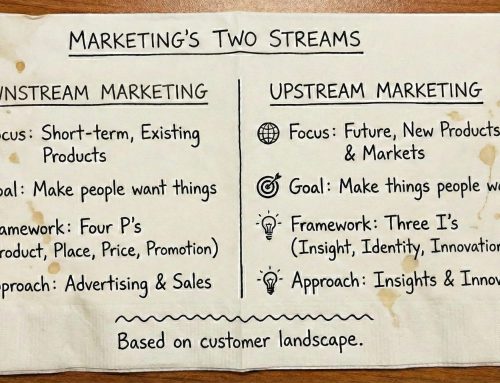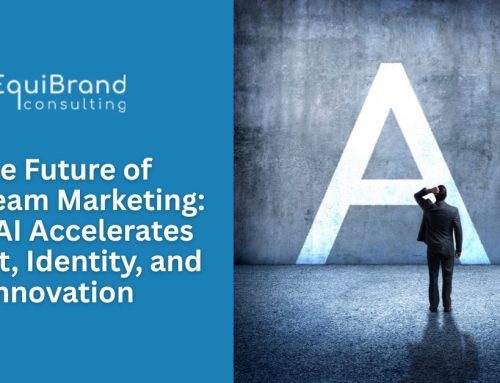 Obtaining deep customer insight through concept testing is a critical component of successful marketing, and can be a source of competitive advantage. The most successful market-driven firms use a variety of techniques to gain this insight, often relying on non-traditional methods for obtaining deep insight into their customer. One such method is the use of concept optimization research, using “whiteboard” marketing concepts and thorough qualitative probing to elicit customer feedback.
Obtaining deep customer insight through concept testing is a critical component of successful marketing, and can be a source of competitive advantage. The most successful market-driven firms use a variety of techniques to gain this insight, often relying on non-traditional methods for obtaining deep insight into their customer. One such method is the use of concept optimization research, using “whiteboard” marketing concepts and thorough qualitative probing to elicit customer feedback.
Concept Testing – What is it?
Concept evaluation involves using customer feedback – obtained in a qualitative research setting – as a means of narrowing and optimizing marketing concepts in an iterative fashion. The objective is to identify a surplus of benefit-based marketing concepts and test them in written form before investing significantly in full development or implementation activities. This process can be used for a variety of strategic purposes, from positioning to messaging to new product development. As shown below, customer need areas are used as a platform for developing statements, written to express the core benefit in slightly different ways. For example, the benefit of convenience could be expressed in a number of ways – time savings, ease of use, portability, etc.
“Survival of the Fittest”
 The concepts are then exposed to customers – one at a time – to determine the overall appeal and probe specific areas of interest. The basic idea is to use the concept as the platform for understanding which benefits are most important, and why. Once individual concepts are explored, concepts are then compared against one another, to help determine which is the most preferred and why. This information is essential to refining and narrowing the list of ideas for subsequent copy refinement.
The concepts are then exposed to customers – one at a time – to determine the overall appeal and probe specific areas of interest. The basic idea is to use the concept as the platform for understanding which benefits are most important, and why. Once individual concepts are explored, concepts are then compared against one another, to help determine which is the most preferred and why. This information is essential to refining and narrowing the list of ideas for subsequent copy refinement.
Effective Concept Development
Concept statements should be written in a manner that stresses the strategic benefits of any given concept vs. creative writing appeal. While the copywriting should be neither boring nor bland, it is important to distill the idea down to its primary reason for being. In fact, “ad copy” should be avoided, as it may oversell an idea that doesn’t really have any customer merit.
Using benefit-based (vs. creative-based) concepts, the moderator then probes for understanding, overall appeal, and differentiation. As concepts are narrowed, there is more time in later groups to probe deeper into phrasing and specific support points.
Concept Testing and Optimization
Throughout the research schedule, customer feedback is incorporated in an iterative manner. In practice, this means active involvement of backroom participants in writing and revising concept statements – before, during, and after individual focus group sessions. Focus groups should be scheduled to allow enough time for concept revisions to occur between groups (usually a couple of hours between groups for debriefing results and then revising the concepts.) The end result is a set of fully-optimized concepts that could then undergo quantitative testing, as necessary.
For more information on Using Concept Optimization to Gain Deep Customer Insight please contact Tim Koelzer at EquiBrand.



















Follow EquiBrand